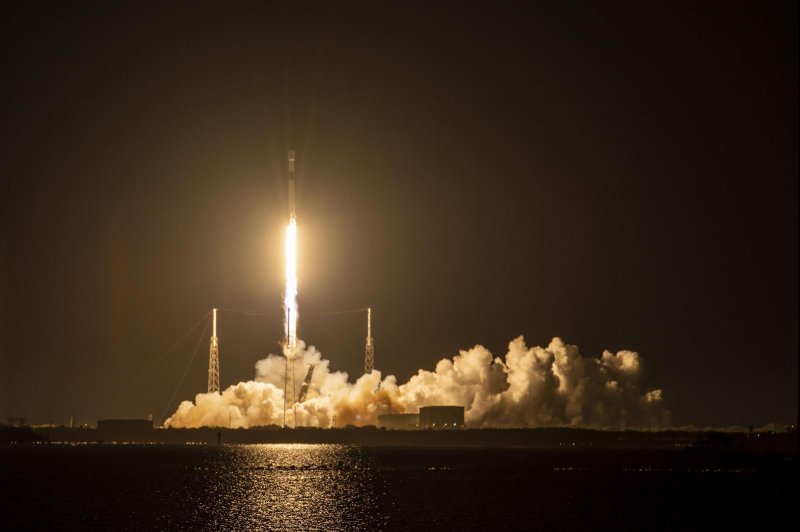Dec. 28 (UPI) — A Falcon 9 rocket carrying 54 Starlink Internet satellites launched from Florida on Wednesday as part of a mission to begin populating a new orbital shell authorized by federal regulators.
The rocket launched from Cape Canaveral Space Force Station at 4:34 a.m. The mission was SpaceX’s 60th of the year, nearly double the total from last year. One more launch is scheduled for the end of this week.
“Under our new license, we are now able to deploy satellites to new orbits that will add even more capacity to the network,” Jesse Anderson, a SpaceX production and engineering manager, said during live launch commentary. “Ultimately, this enables us to add more customers and provide faster service, particularly in areas that are currently oversubscribed.”
The Falcon 9 rocket released the 54 satellites at an orbital altitude and inclination set aside for use by SpaceX’s second-generation Starlink network, which the company eventually intends to launch on the new Starship mega-rocket.
On Dec. 1, the FCC granted SpaceX approval to launch up to 7,500 of its planned 29,988-spacecraft Starlink Gen2 constellation.
“Our action will allow SpaceX to begin deployment of Gen2 Starlink, which will bring next generation satellite broadband to Americans nationwide, including those living and working in areas traditionally unserved or underserved by terrestrial systems,” the FCC wrote in its Dec. 1 order partially approving the Starlink Gen2 constellation. “Our action also will enable worldwide satellite broadband service, helping to close the digital divide on a global scale.
SpaceX has said that the new license will allow its network to handle more traffic and the new satellites can beam service directly to smartphones.
“This launch marks the first of Starlink’s upgraded network,” SpaceX said on its website. “Under our new license, we are now able to deploy satellites to new orbits that will add even more capacity to the network. Ultimately, this enables us to add more customers and provide faster service — particularly in areas that are currently over-subscribed.”

